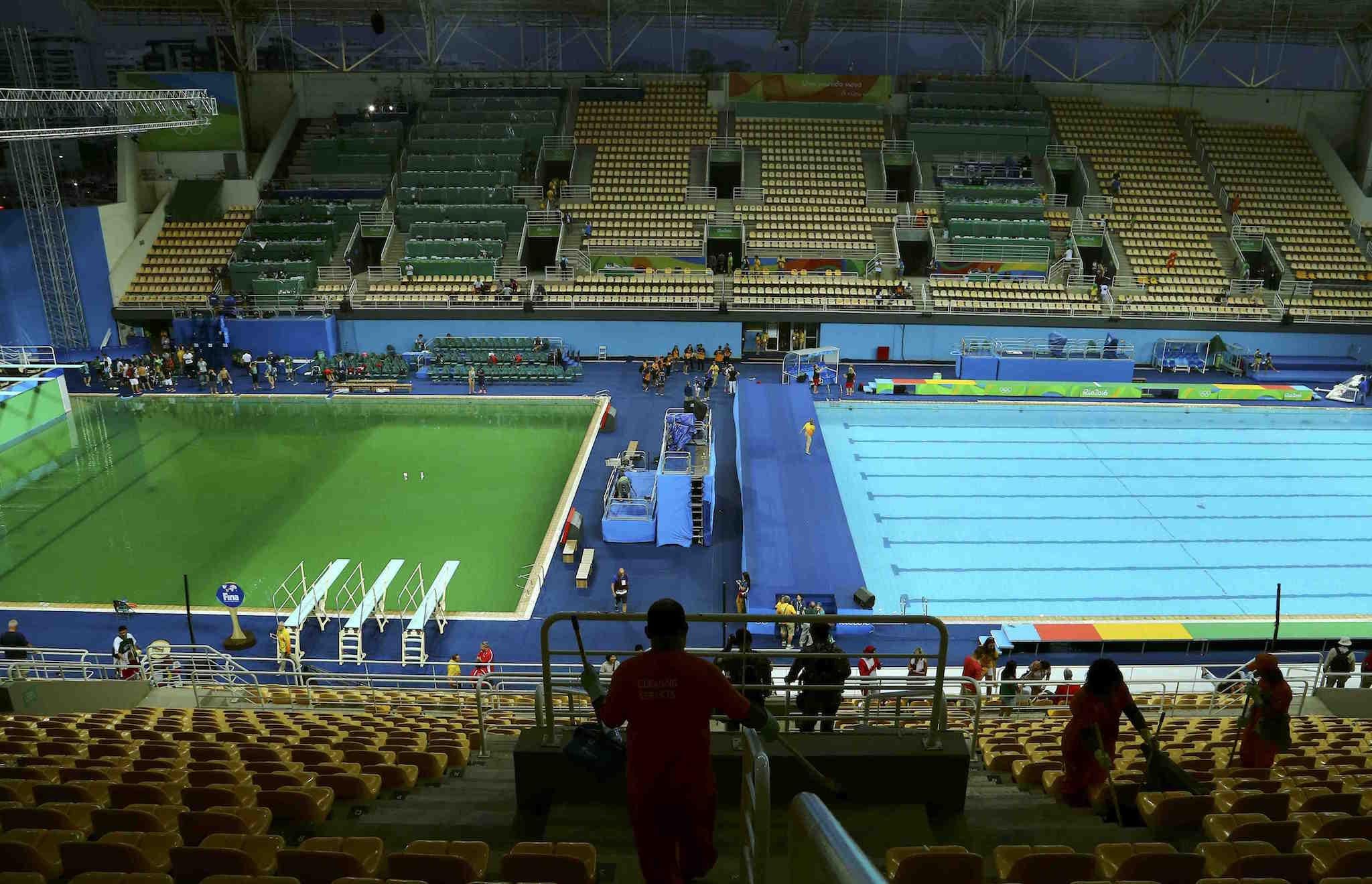Rio 2016: Green Olympic diving pool is ‘safe’ say officials, but experts wouldn’t swim in it
The green colour is a sign of something very wrong with the pool – and even if it is algae, as many believe, then there's reason to worry
The lush, green diving pool at the Olympics might not be as safe as officials are saying, according an expert.
Olympic officials have said that though they don’t know what has caused the water to go green, it is nothing to worry about and will be fixed soon. But a pool treatment expert has warned that he would not go in the water while the health of the pool is still uncertain.
“The water is not supposed to be green,” said Ralph Riley, vice-chairman of the Pool Water Treatment Advisory Group (Pwtag).
“It’s great that they’re saying there’s no safety threat to the divers,” said Mr Riley. “But I’m not sure what that means.”
Mr Riley said that Olympic officials probably meant that there’s no immediate safety threat to the divers, from algae or whatever else had led to the green hue. But the colour could be a symptom of something else equally worrying, he said.

“If it has gone green and it’s due to a lack of disinfectant, then that means there is some sort of implied threat or risk.
“If they’re saying that’s not the case, then it does point towards algae,” said Mr Riley. But if there’s algae “then that implies there’s been a breakdown in the disinfectant process anyway”, meaning that the pool could be unclean and not properly treated, he said.
Mr Riley made clear that he couldn’t say why the pool had gone green, since he doesn’t know what system organisers are using. But there are multiple explanations, which include algae, green disinfectant or a potential colour caused by the way the water is interacting with copper in the heating system.
Whatever the cause, the systems that are built to automatically keep the water clean and safe had clearly broken, Mr Riley said, and the pool wouldn’t be safe until it was clear that they were working again. Mr Riley said definitively that he would not swim in the pool.
Howard Gosling, an independent pool and spa adviser and former chairman of Pwtag, said that he too would not swim in the pool.
"If there's not enough chlorine in the water, you don't know what bugs will be growing in there," he said. "I would certainly – even though the divers don't stay in there very long – I certainly would be reluctant to go into it."
Mr Gosling said that as well as the potential health issues that the green pool, the lack of visibility could cause other problems. "In the normal way, we recommend that if you can't see the bottom of the pool then don't get into it," said Mr Gosling.
A statement from Olympic organisers said water tests were conducted and there was no risk to athletes. They couldn't explain the colour change, but said it's being investigated.
“"It's very important to the Rio 2016 community to ensure a high quality of play," read the statement. "Tests were conducted and the water was found to be safe. We're investigating what the cause was."

Rio spokesman Mario Andrada said the green was caused "by a proliferation of algae".
"This was because of heat and a lack of wind," he said. "We did all the chemical tests. The pool will be blue today.
"If it were green and yellow, we would know it was a patriotic thing," Andrada joked, referring to Brazil's national colours.
Canada’s team leader Mitch Geller said that he suspected a broken system had led the algae to come out, and that the warm and sunny day had allowed it to multiply quickly.
"Everybody was scratching their heads going, 'What's going on?"' he said. "I think that the filter is busted, but I'm not sure. It's not really dangerous. It's not like it's toxic or dirty or any of that. It seemed to get worse over the course of the competition."
Mr Geller said that a Canadian pool expert would arrive soon and would offer to help the Olympic organisers treat the water if there was a problem with it.
"I don't know what it's going to look like tomorrow," he said. "I hope it's not a swamp."
Join our commenting forum
Join thought-provoking conversations, follow other Independent readers and see their replies
Comments
Bookmark popover
Removed from bookmarks